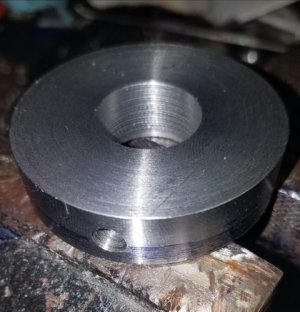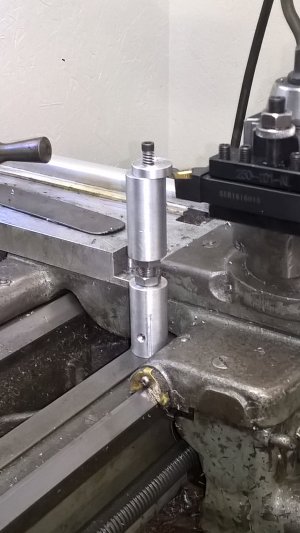After making the gauge I thought about hardening at least the face of the disc so my lathe tools don't mar the face.
I do NOT want to knock the wind out of your sails on a project you're looking forward to. From a functionality perspective however, let me suggest that wile you WILL see marks, it will probably take you decades to wear that down enough to affect it's function or accuracy. My home made one has WAY less surface area than yours, to spread out the wear, it's made of aluminium, and it's not suffering any loss of accuracy. That includes primarily ground high speed steel tools, which scratch far worse than generic carbide tools. (There ARE some VERY sharp carbide tools that would match what the HSS does). But aside from visual imperfection (in a place you can't see)... I can't see a harm in leaving it as it is.
If you WANT to do this- I'd highly suggest that you harden the WHOLE part. In a makeshift setup, if you try to harden one face, you're going to (most likely) warp the part by a large enough amount that it will affect it's functionality. You could of course sand and polish that out, it won't be "that much". Heat it equally, slowly, so it warms up the same all the way to the middle, supported by wire so that you can drop it straight into your quench, and while it's in there, keep it moving.
There would be no harm or compromise in leaving the piece "glass hard" after the quenching. Tempering "could" be done to make it tougher, but it's not really subject to that kind of use where it would matter. Unless you want to use it for a hammer. Then tempering it back "some" could be of use. But not required for setting tool height. In the fully hardened state, it won't cut the tools, and the tools won't cut it.




 It's amazing how sensitive our digits are.
It's amazing how sensitive our digits are.